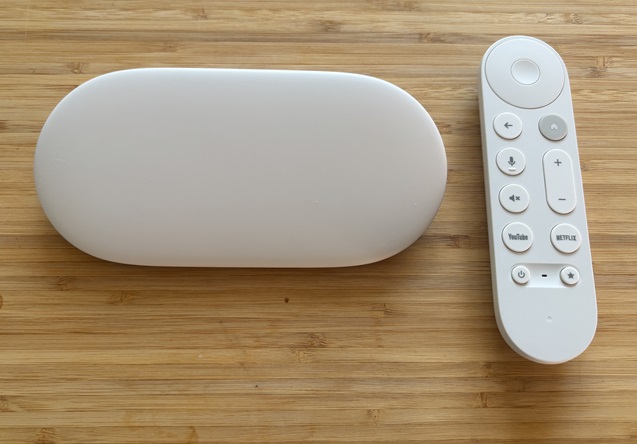The Google TV Streamer Is Not The (an)Droid You Are Looking For!
I am always excited when a new streaming box hits the market. So when Google announced that they were replacing the Chromecast with the Google TV Streamer 4K, I was excited. Priced at $99, could it take on my beloved NVIDIA Shield? What about the reigning King of Streamers, the Apple TV 4k? Well, to be blunt, the Google TV streamer is not the (an)droid you are looking for! Let’s discuss.
In The Box/Looks
I received my Google TV 4K from Amazon. It was obviously “recycled” (ie. already opened and returned), so that should have told me something right there.
The box includes the Google TV streamer, remote, batteries, power brick, and USB-C cable. I will give Google an A+ for packaging. Everything is designed to be recycled. The only plastic to be found was around the USB cable.
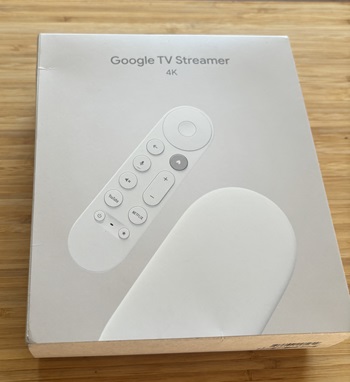
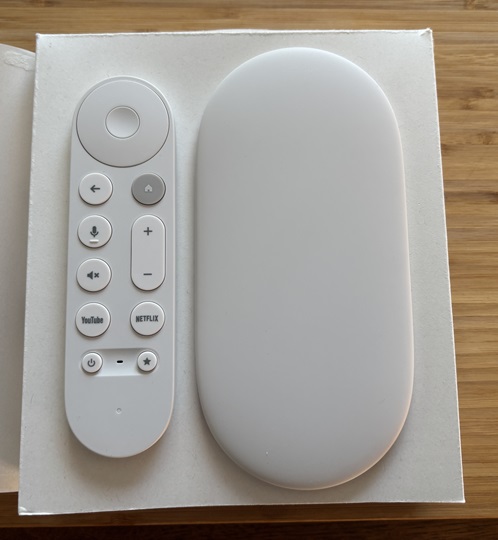

The streaming box is pretty simple with HDMI and ethernet ports, a reset button, and the USB-C power input. The remote is a basic Google remote, with dedicated Netflix and YouTube buttons. The remote is small enough to be comfortable in the hand but big enough not to get lost easily.
Specs
Colors:
Porcelain
Dimensions and weight:
Length: 6.4 in
Width: 3.0 in
Height: 1.0 in
Weight: 5.7 oz
Resolution:
Up to 4K HDR, 60 FPS
Video formats:
Dolby Vision, HDR10, HDR10+, HLG
Audio formats:
Dolby Digital, Dolby Digital Plus and Dolby Atmos
Connectivity:
Wi-Fi 802.11ac (2.4 GHz/5 GHz)
Bluetooth 5.1
Memory:
4 GB
Storage:
32 GB
Processor:
MediaTek 8696 chipset
Ports:
USB-C (power/data)
HDMI 2.1 (Type A)
Ethernet (10/100/1,000 Mbps)
Operating system:
Android TV OS
Smart home connectivity:
Matter
Thread border router
Setup
Google has to be THE easiest box to set up. I plugged in the box, hardwired it to my switch, and plugged it in. Once I paired the remote, I used Google Home to complete the setup process. The Google TV 4K installed all the needed updates, asked me about my streaming services, and then went about its day.

All in all, setup, including software updates, took less than 10 minutes. For those without the Google Home app, all is not lost. You can use the remote to manually punch in your account info, or set up a new account. However, save yourself the aggravation and just use the app.
UI and Usability
I love the Google TV interface/UI. I know that a lot of folks hate that Google has injected “ads” in the form of recommendations from other streaming services. That doesn’t bother me. The installed apps sit on the main row and display your installed apps.

The next level of boxes shows recommended programs from your streaming services, and then from there, popular selections from those same streaming services. While I understand that some people just want a simple loader, with only their apps, I like recommendations. I have found tons of hidden gems on services like Tubi by following these recommendations.
The Google TV 4K uses Android 14, the latest version available. The MediaTek 8696 processor, however, is not the latest, and the Tegra X1 inside the 2019 Shield TV Pro bests it in every way possible. It boggles the mind that Google would produce a brand-new streamer and put a subpar processor in it. This choice dooms the Google TV streamer to early obsolescence!
That said, the UI seems snappy and when I am scrolling through my streaming services, it is quick to snap from tile to tile. However, as soon as you open an app, there is a delay as you scroll from screen to screen and the unit has to render new images. Right now, its not a deal breaker, but as this ages, it will be.
Streaming Performance
This is the Google TV Streamer 4K, so how does it stream? Not bad at all, but there is a “but” here! I don’t have all the streaming services going. Therefore, I can only test it with what I have, including YouTube, Apple TV, Amazon, Disney Plus, and Plex.
YouTube
I had some issues with YouTube right off the hop. Whereas I could navigate the app and menus flawlessly, I could not get a video to play at all. I tried different settings, turned off colorspace matching and resolution matching, and everything else in between. Finally, I uninstalled the app and reinstalled it and had success.
Once I had it up and running, I was happy to see that YouTube was able to give me HDR10 with no issues whatsoever. The demos that I played looked amazing and with the wired 1Gbps internet, zero stutters. There is no native support with Dolby Digital or other formats. Everything is fed to my A/V receiver in 2.1 PCM and the receiver did the rest. The sound quality from YouTube is meh at best, so I was less than impressed with the audio side of the equation.

Disney+
Disney+ is my go-to for streaming services. The Google TV Streamer 4K makes good use of Dolby Vision and Dolby Digital. Again, no passthrough here, so everything for Atmos gets up-mixed from Dolby Digital and then into Atmos.
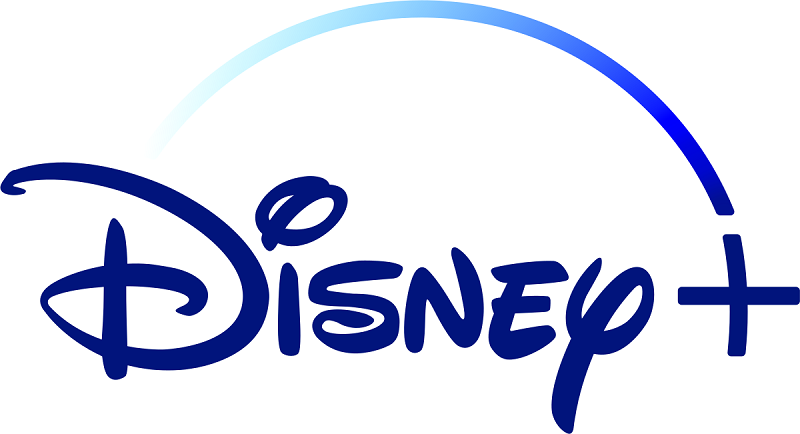
If I am being honest, the Google TV Streamer 4K is about the same, in terms of HDR and sound quality as my Apple TV 4K. I played the same movies on both, and to my eye, there were no discernable differences.
I was pleasantly surprised at how flawlessly it worked for me here. I was beginning to like the Google TV Streamer 4K
Plex
If you have read any of my articles, you know that I have a significant media library I ripped to stream on my Plex Media Server. One of THE main reasons I got the NVIDIA Shield Pro was for HDMI passthrough to get all my lossless goodies. You have no idea how excited I was to fire up Plex and see an option for HDMI Passthrough. Do we finally have a viable option as a replacement?

No! While there is an option for HDMI passthrough, Dolby Digital movies are up-mixed to Dolby Atmos and, DTS:X movies get played as DTS IMAX. I found that I but odd, mainly because I expected Neural:X, but whatever. However, even more weirdness happens with the Google TV Streamer 4K.
If you have HDMI passthrough enabled and try to play a Dolby TrueHD 7.1 movie, Plex freezes. You get the HDR logo, and then the screen goes black and nothing will play. I looked online for a workaround, and I couldn’t find anything, so for now, HDMI passthrough is a bust!
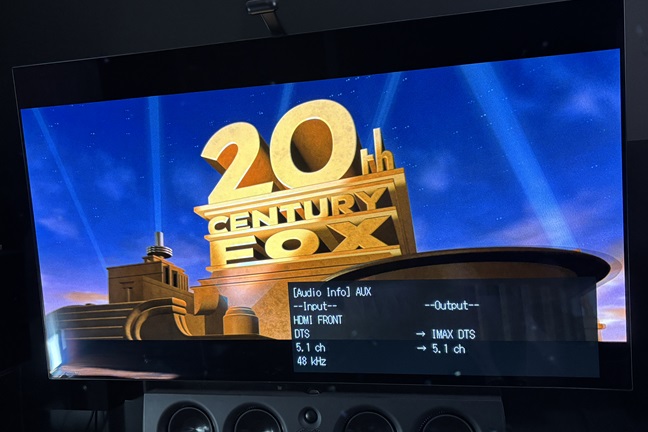
I also found out that Dolby Vision with the Google TV Streamer 4K only works up to 30Hz. Once you get past there, it’s SDR, HDR and, HLG only. I am not sure why that is, but if you didn’t know about that limitation and tried to play a Dolby Vision movie in Plex it locks up again. That said, I had no issues with how the Google TV Streamer 4K performs with Plex. As a Plex Media player, it’s good. Most of my moves are Remux (1:1 copies) and aside from the lack of lossless passthrough, they played perfectly.


How Does It Compare To Other Streamers?
Here is where the Google TV streamer is not the (an)droid you are looking for! While it is a capable enough streamer, when compared to the Apple TV 4K, the NVIDIA Shield or even the old Google Chromecast with Google TV, it’s just meh.
Simply put, it doesn’t do anything better than other streamers, and does some things worse. That is not a good combo when you are about to shell out $100 for the “latest” streamer on the market. And listen, it has a lot of cool features like being a Matter (home automation) hub and a voice assistant built-in. But it’s a streamer (it’s in the name) and it should excel at that core function. Yet, it doesn’t. Oh, and for the record, the Apple TV 4K also has Siri and Home built-in.
Our Take
At $100, the Google TV streamer is not the (an)droid you are looking for! It is double the price of the Chromecast it replaced and hasn’t doubled the performance. Had Google kept the price of this new unit at $49, I would have easily recommended it.
However, at $100, there are too many other options that can outdo the performance of the Google TV Streamer 4K. If Google can fix some of the bugs and make it more competitive with the performance of the Apple TV 4K or Shield Pro and keep this price, then I would be excited. For now, I would pass on this one.

